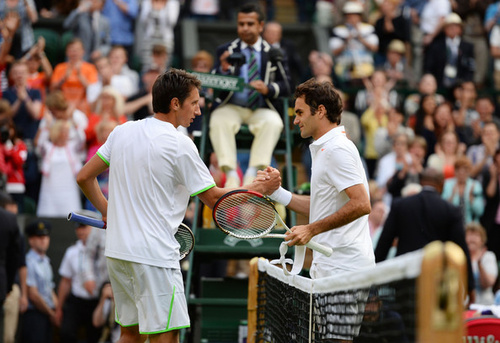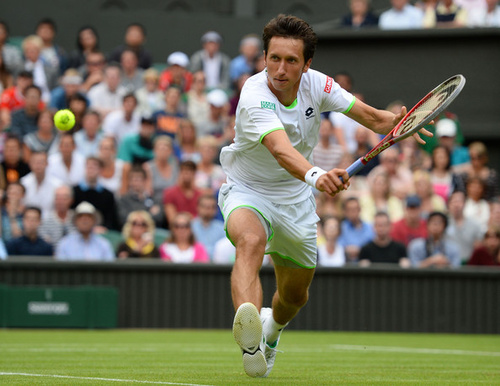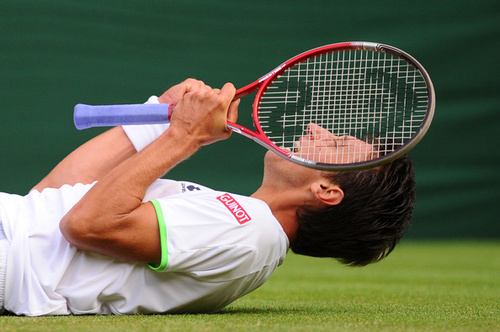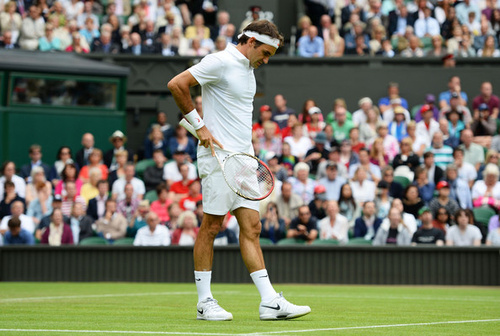Don't miss any stories → Follow Tennis View
FollowATP Turning Points of 2013 (IV): Sergiy Stakhovsky Stuns Federer
After analyzing Rafael Nadal's epic Roland Garros triumph over Novak Djokovic, Nick Nemeroff moves from clay to grass for the greatest upset of the season.
When Rafael Nadal lost in the second round of Wimbledon in 2012 to Czech Lukas Rosol, the tennis world was stunned. This disbelief carried over to 2013, when the Spaniard was upset by Belgian Steve Darcis.
Nadal’s loss in 2012 was undoubtedly the upset of the tournament. Only a few hours into Wimbledon 2013, Nadal appeared to be bearing the brunt of the biggest upset of the tournament once again.
But Sergiy Stakhovsky had far different ideas.

Coming into a second-round encounter with Roger Federer, the Ukranian journeyman was ranked 116th in the world. In addition, Stakhovsky had won only one main-draw match at Wimbledon in his career. Federer, on the contrary, came into their match with seven Wimbledon titles and 67 matches won overall at the All-England Club. To say that Stakhovsky was up against it would be the understatement of the century.
If this were March Madness, Federer-Stakhovsky would be a classic 1 vs. 16 matchup. In fact, before this match, most tennis fans probably knew Stakhovsky more for his attention-grabbing Twitter personality and his staunch opposition of equal prize money in tennis than for his on-court accomplishments.
As the match unfolded, Stakhovsky immediately demonstrated that he felt he had no chance from the baseline. Employing the play that tennis traditionalists love more than any other, the serve-and-volley, he quickly found a comfortable niche at the net. Stakhovsky was astute enough to realize that, although this traditionalist tactic has been phased out of the modern singles game, it is not entirely obsolete and was the most effective strategy available to combat Federer’s supreme grass-court prowess.

After failing to break at 5-5 in the first set, Stakhovsky’s resistance eventually decayed as Federer took the first 7-5 in a tiebreak. The Swiss legend is unquestionably one of the finest front-runners in tennis history and, as of today, has a 819-60 record after winning the first set. Winning three out of four sets against Federer on grass was Stakhovsky’s only escape.
The second set was a reversal of the first set, with Stakhovsky winning 7-5 in a tiebreak, ending the set with a volley winner off a floating Federer backhand return.
While Stakhovsky winning the second set was not the most implausible thing that has ever happened on a tennis court, it definitely raised some eyebrows. But once Stakhovsky broke Federer at 5-5 in the third set and proceeded to serve the set out with ease, what was originally a routine second-round assignment for Roger Federer was gradually developing into one of the greatest upsets in tennis history.
Breaking under pressure, letting your nerves overcome your tennis, and caving in the biggest moments—these are familiar obstacles that underdogs must conquer in order to find the finish line. As he displayed to the entire tennis world, Sergiy Stakhovsky was letting none of these things get in his way.
The Ukranian broke at 1-1 in the fourth set and was four holds away from victory. But, up 3-2, Stakhovsky netted a forehand approach to give Federer the break back. The two eventually found themselves in a tiebreaker once again. Stakhovsky stood on the precipice of the finish line as he pushed ahead to 6-4 in the tiebreak, when Federer whizzed a forehand down the line passing shot to save match point. On Stakhovsky’s second match point, in a complete role reversal, Federer was the one who cracked as he sailed an errant backhand into the doubles alley. Stakhovsky had won and the tennis world was forced to collectively pinch itself to make sure that it was real.

For Federer, this loss marked the beginning of endless doubt and criticism from the media. While this is nothing new for the Swiss, the intensity of the scrutiny rose to unprecedented levels.
The chants of “it’s over” ring loud and far after almost nearly every key Federer loss. After Federer lost in the finals of Wimbledon in 2008, there were critics out there who claimed that Federer would never be the same. After losing to Novak Djokovic in the semifinals of Roland Garros 2012, Federer had failed to win a major in his last nine attempts, a more reasonable time for doubters to surface.
But this match may have been the most justifiable occasion to doubt Federer. Being another year older and possibly a half-step slower, Federer’s second-round defeat at Wimbledon was not like any other defeat he had experienced since 2004, the last time that the Swiss superstar lost in a major before the quarterfinals. One of the greatest champions of all time had been taken down at a tournament where he dazzles by a completely unheralded journeyman, one who had never even beaten a player ranked in the top ten.

After Wimbledon, Federer made what proved to be an extremely peculiar and ultimately unrewarded decision to play in Hamburg and Gstaad in an attempt to rebuild his confidence. In most years, Federer would wait until August to play in Canada. Losing to Federico Delbonis in Hamburg and Daniel Brands in Gstaad, his confidence continued to trek further in the wrong direction. During these two tournaments, Federer played with a back injury and ultimately said that he regretted his decision to partake in these post-Wimbledon clay court events.
Forced to withdraw from Montreal to recoup his back, Federer would ultimately go on to lose in the fourth round of the US Open to Tommy Robredo, someone who never had defeated him before. In the end, he won only one small title and recorded only three top-10 wins in 2013.
But, in a season that Federer will surely not hold with fond memories, his loss to Sergiy Stakhovsky marked the nadir.










